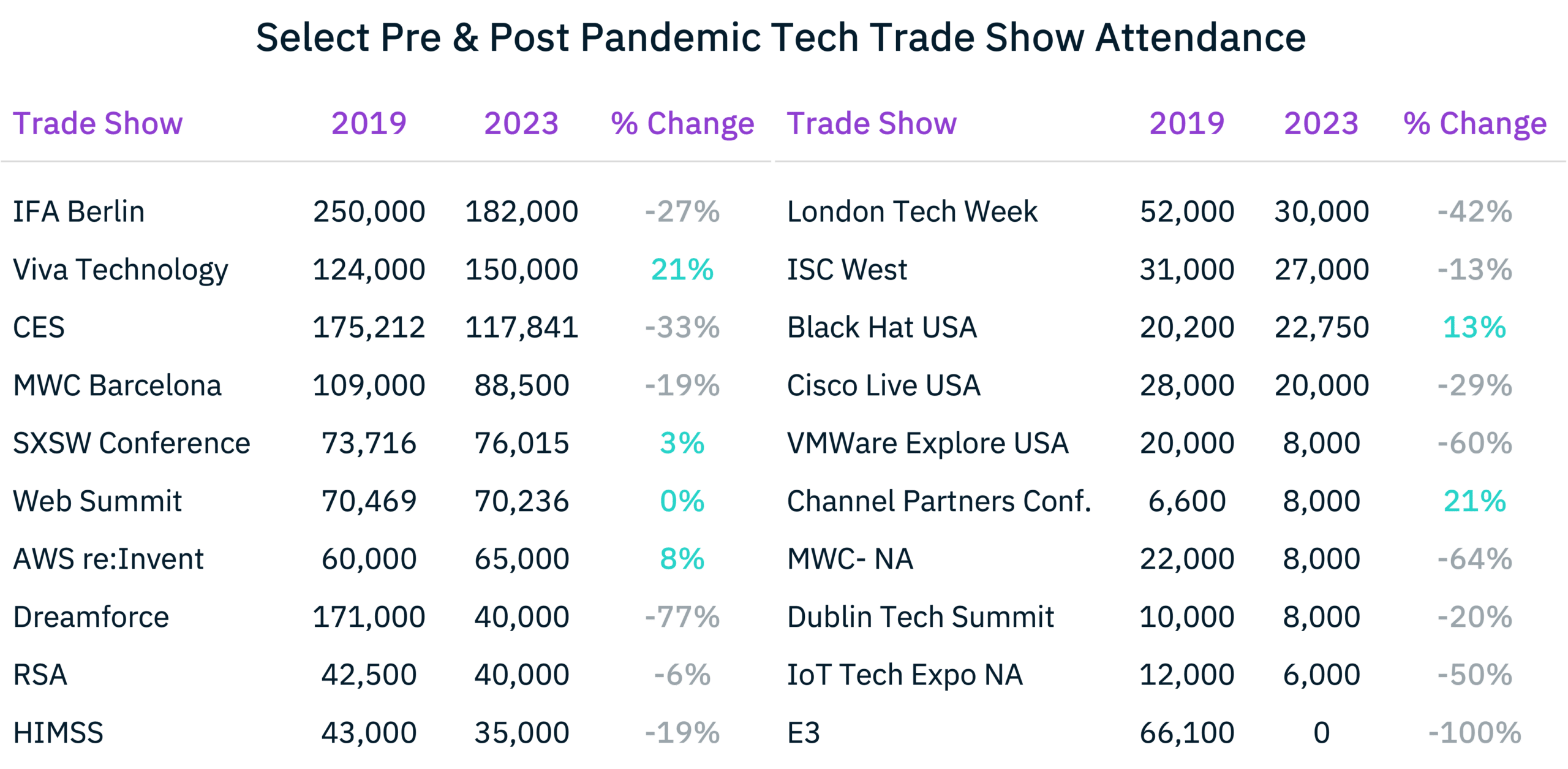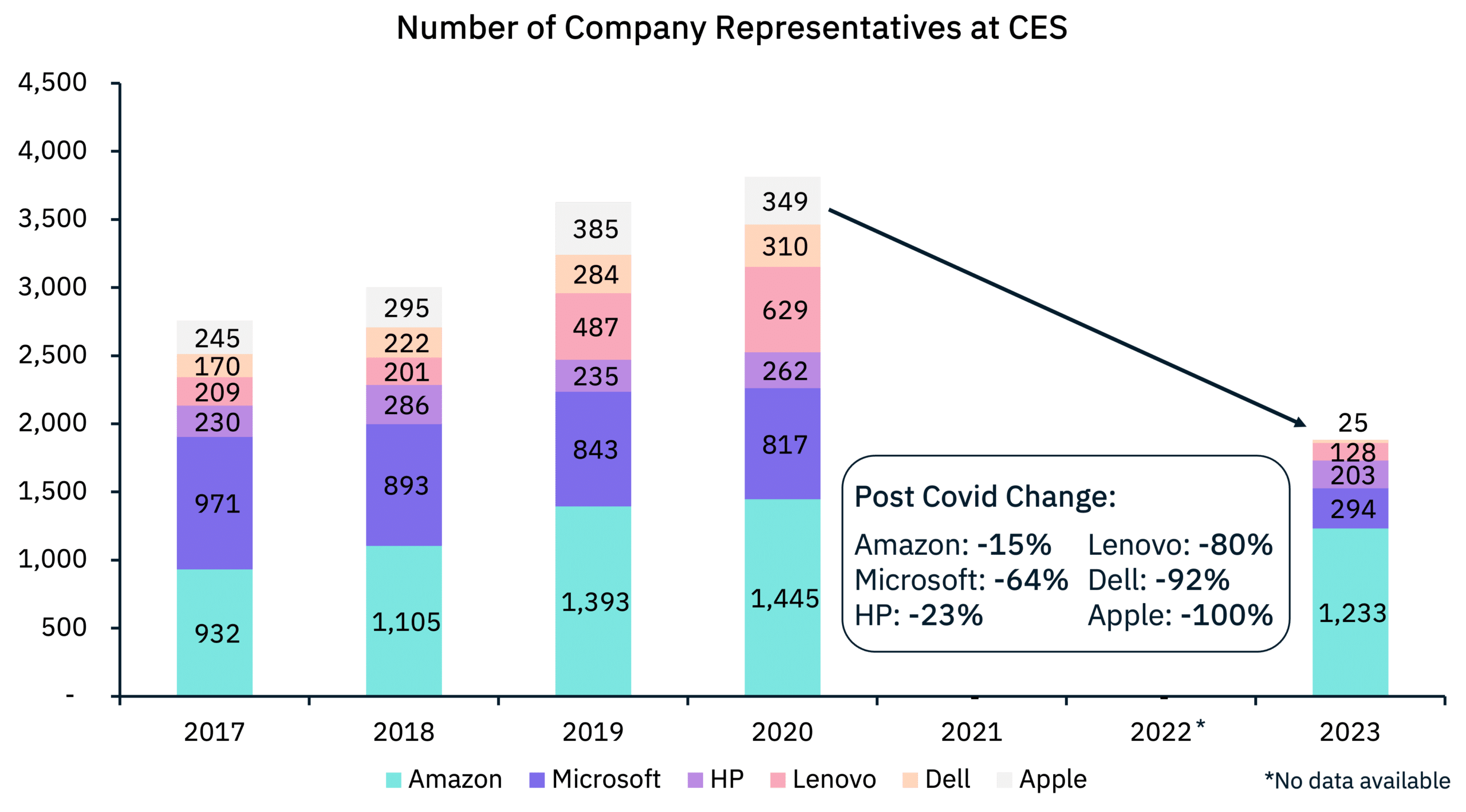News

News

FTFL - The Show Must Go On
This article appeared in our February 2024 issue of From the Front Lines, Bowen’s roundup of news and trends that educate, inspire and entertain us. Click here to subscribe.
As growth tech M&A bankers one thing we know is that all successful deals require trust. We believe the foundational component of trust is human relationships. We now live in an era dominated by social media and communications apps where you can actually “know” someone without ever meeting them. Parasocial relationships, anyone?
Speaking from experience, one of the most powerful ways to network and begin to develop 1:1 relationships is by attending conferences and trade shows.
For February’s FTFL – with 2024 conference season in full swing – we decided to take a look at post-Covid trade show data and examine if conference attendance, like office usage, has been permanently altered by the pandemic.
We first looked at pre- and post-pandemic attendance trends among some of the world’s largest tech conferences. While there is no definitive list of top tech conferences, we found a representative group of large conferences with available attendance data.

While the larger drop-offs like Dreamforce and E3 are notable, the more salient takeaway is that fully two-thirds of these shows have not yet recovered to their pre-pandemic attendance levels.
We then looked at this group of conferences in the aggregate over the long term.

The 28% drop stands out when we compare it to the comeback of the broader travel industry, where 2023 global airline capacity was only 4% below 2019 levels. It bears noting that at least two other factors are likely contributing to the ongoing malaise – nearly 300,000 tech layoffs since 2023 and Chinese companies pulling out of US shows. From 2013 to 2019, attendance at these 20 shows grew at a CAGR of 9%. If it had continued at that rate, 2023’s attendance would have been 1.9 million. Despite a strong rebound from the 2020-2021 depths of Covid, the industry’s struggles remain.
Pivoting from the large cohort, we examined how post-pandemic attendance has fared at trade shows hosted by high-profile companies.

Interestingly, company-hosted trade shows are down 47% or ~20 percentage points more than the large cohort.
Lastly, we wanted to look at how tech companies are prioritizing conferences post-pandemic. Although companies don’t disclose their conference spending, CES provides a wealth of information via an annual audit, including yearly attendance figures from major companies.

Are tech’s biggest stars shying away from CES? It would certainly appear that way (note that of the shows analyzed CES has a unique retail flavor, whereas others profiled are B2B). When we exclude Amazon, this group’s CES attendance is down 73% from 2019. Is it attributable to layoffs in the industry? Are they trying to prioritize their own small and growing shows? While we can’t say for sure, it does appear that overall, trade shows have survived the pandemic and must adapt to a new environment.
Over the past two decades, Bowen has been at both the forefront and the ground level of new disruptive technologies transforming industries. We were there in the late 1990s when Jeff Pulver established VON and in the early 2000s when Michael Tessler and BroadSoft created Connections. What we appreciate is how they started as “fringe technologies” with very humble businesses to truly transform an entire industry. VON and Connections created deep human bonds as everyone in the industry needed to band together to stay afloat. As we race towards an increasingly AI future, we remain confident that it is humans and human connections that will ultimately lead us to that future. And this, our dear friends, is why trade shows remain as important as ever.


